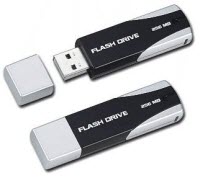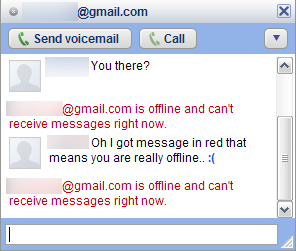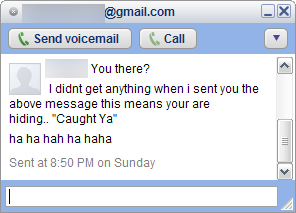The three-day-long terror strike on the country's financial capital was devastating in terms of its reach and impact. It has left Corporate India badly shaken and the elites numb.
It is no more about bombs being thrown at bus stations or trains getting blasted. It is no longer about only Nagpada or Govindpuri residents losing limbs and lives. Terror has now climbed up the value chain.
As the new age entrepreneur Kiran Majumdar Shaw told a Bangalore newspaper, "So far, the terrorists targeted common people. Now the society's elite, the business sector, is the target. What happened in Mumbai is a loud wake-up call for all of us to do something to protect ourselves."
Corporate India did not bat an eyelid when Mumbai train blasts took place, or when Sarojini Nagar was burning on a Diwali day, or Hyderabad was weeping two years before.
Light a candle for the fallen Terror strikes at Mumbai's heart But today, every corporate captain is angry, and so are the celebrities who people Page 3 of newspapers, due largely because the attacks on the three top hotels were directly aimed at those who frequent these places, for business or pleasure (contrast this with the scant coverage of the carnage at the Chhatrapati Shivaji Terminus, for example, where commoners were involved).
All the same, the bleeding-heart liberals would be back to their routine ways after a few days. They will lament that the captured terrorist has not been given his favourite food and not allowed to watch TV or use his cell phone; they will say his human rights are violated. Just wait for the chorus.
Of course, this time it will be between Page 3 and the jholawalas (activists) and that should be an interesting match to watch, but that's another story.
In the last ten years, not a single session of any seminar sponsored by the CII or Ficci or business/general journals has focussed on terrorism. When this writer once broached the importance of talking about it, a senior business captain said it is for the government to deal with.
Many of those seminars gave importance to Musharraf and now Zardari, as if they are going to provide any solution when they are a part of the problem.
Now, at least, terrorism is being realised as a problem facing the country.
Let us summarise what the real situation is and what the corporate sector should do if we are serious in fighting terrorism on our soil.
1. Recognise and treat Pakistan as a terrorist state. The state policy of Pakistan is terrorism and their single-point programme is to destroy India. This needs to be internalised by every business baron including the owners of media.
2. Now, the elite of Pakistan are more angry, since India is growing at 7% and they are given CCC rating and stiff conditions for borrowing from the IMF.
Many an academic from that country, who I have met in global conferences, has openly lamented that nobody talks about Indo-Pak relations anymore, but only Indo-China or Indo-American, etc. They want to be equal but they are in deep abyss.
3. Pakistan is the only territory in the world where an army has a whole country under its control. This is an important issue since studies have found that a large number of corporates in Pakistan are ultimately owned by the Fauji Foundation (FF), Army Welfare Trust (AWT) Bahria Foundation (BF), Shaheen Foundation (SF) all owned by different wings of armed forces (See paper presented by Dr Ayesha Siddiqa-Agha on 'Power, Perks, Prestige And Privileges: Military's Economic Activities In Pakistan' in The International Conference on Soldiers in Business -- Military as an Economic Actor; Jakarta, October 17-19, 2000).
Hence, do not try to think of Pakistan without its army, irrespective of who rules that country temporarily and nominally. At least 70% of the market capitalisation of the Karachi stock exchange is owned by the army and related groups.
4. There are three groups in India, who are obsessed with friendship with Pakistan. One is the oldies born in that part before partition and who are nostalgic about the Lahore havelis, halwas and mujras. The second is the Bollywood and other assorted groups, who look at it as a big market. The Dawood gang has financed enough of these useful idiots. The third is the candle light holding bleeding heart liberals (BHLs) who cannot imagine India doing well without its younger brother taken care of.
All three have been proved wrong hundreds of times, but they are also opinion makers. Shun them, avoid them and ridicule them.
5. We should categorically, unambiguously, unequivocally boycott Pakistan in all aspects for a decade or more. Be it art, music, economy, commerce, or other hand-holding activities. That army-controlled state has to realise that it has done enough damage to global civilisation.
More than 100 acts/attempts of terror recorded in the world since 9/11 have had their roots in Pakistan. More than 40% of the prisoners in Guantanamo are Pakistanis.
6. We should recognise that it is our war and nobody in the world is going to wage it on our behalf. What the Americans are thinking, or what the Britishers are going to do, will not help. A determined country should have a sense of dignity and independence to fight its war.
We should stop interviewing leaders from that country who mouth the same inanities that "you have not produced any proof." The Government of India should perhaps create a museum of proof between India Gate and North Block.
I am amazed that a country of a billion is required even to furnish proof. If one-sixth of humanity says that the terrorist state of Pakistan is the root cause of global terrorism -- it is factual. Let us not fall into the trap of providing proof to the culprits.
7. We should realise that a united Pakistan is a grave threat to the existence of India. Hence, we should do everything possible to break up Pakistan into several units. This is required to be done not only for our interest, but for world peace.
8. We have made a grave blunder by suggesting in the international fora that "Pakistan is also a victim of terror." That is a grave error and it will haunt us for decades. They are perpetrators and our government is in deep illusion if it tries to distinguish between organs of power in that country thinking it is like India.
There is only one organ, namely its army (with ISI as a sub-organ) in that country, which owns and controls at least 70% of the GDP in that country.
If we want the world to treat Pakistan for what it is, then we should start practising it. Always call it the 'terrorist state of Pakistan' and never have any illusion that it is going to be any different.
If corporate India, including electronic/ print media, starts practising this, we should see results in a few years. Are the elites listening?
Courtesy :The author is professor of finance and control, Indian Institute of Management-Bangalore, and can be contacted at vaidya@iimb.ernet.in. The views are personal and do not reflect those of his organisation.
Under license from www.3dsyndication.com.














 Download an icon you would want to see appear when you plug in your thumb(pen) drive. Place the icon at the root of the drive. Next open notepad and type the following:
Download an icon you would want to see appear when you plug in your thumb(pen) drive. Place the icon at the root of the drive. Next open notepad and type the following: Mojopac
Mojopac You can encrypt all the data on your USB drive using Truecrypt. This fives you added security if you have some sensitive data on your USB drive. Simply run it and choose your USB device to encrypt. TrueCrypt is free, Open Source and efficient and gives you extra security, download it
You can encrypt all the data on your USB drive using Truecrypt. This fives you added security if you have some sensitive data on your USB drive. Simply run it and choose your USB device to encrypt. TrueCrypt is free, Open Source and efficient and gives you extra security, download it  Backing up is always a nice thing to do, specially when you have to use it on different computers. There is a portable app to make this very easy. Its toucan, you can install it on your USB drive and back up, sync and encrypt your data as and when you want. Or else there is this the USB Image Tool that creates an image of everything you have on your drive and saves it as one file.
Backing up is always a nice thing to do, specially when you have to use it on different computers. There is a portable app to make this very easy. Its toucan, you can install it on your USB drive and back up, sync and encrypt your data as and when you want. Or else there is this the USB Image Tool that creates an image of everything you have on your drive and saves it as one file.  You can install and run Linux from your USB thumb drive, this is an excellent way to recover systems that won’t boot, or to just plug it into another computer and do all of your work using linux applications and surf the net without leaving any history on the host computer. For this try
You can install and run Linux from your USB thumb drive, this is an excellent way to recover systems that won’t boot, or to just plug it into another computer and do all of your work using linux applications and surf the net without leaving any history on the host computer. For this try 






